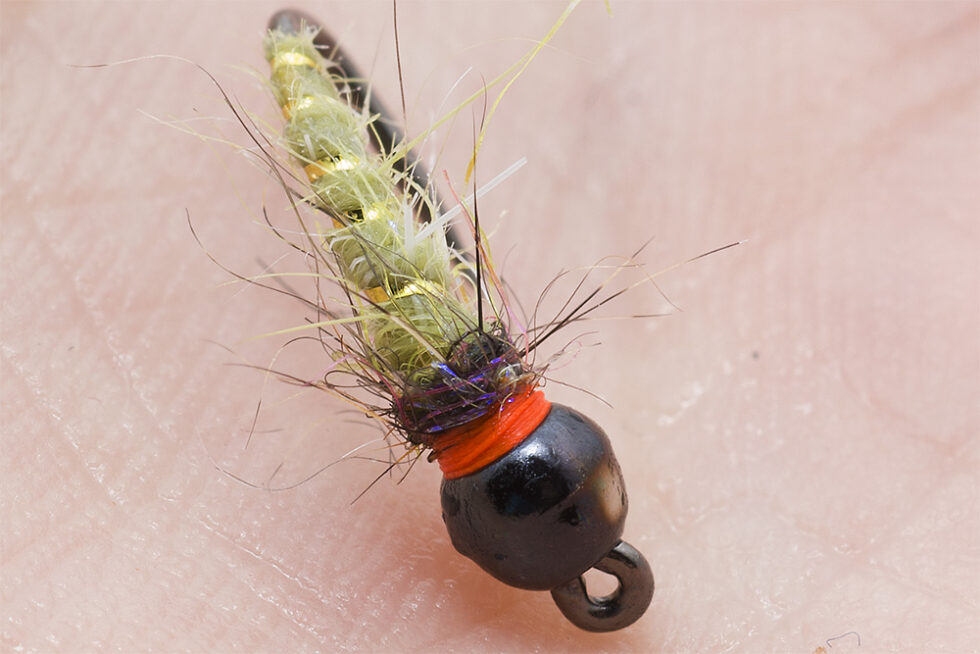
I forgot to add this video I published on my youtube channel so here it is :
Czech nymphs are a key part of Czech-style nymphing, a highly effective fly-fishing technique that originated in Eastern Europe and has gained worldwide popularity. These nymphs are designed to mimic various aquatic insects, especially caddis larvae and other bottom-dwelling creatures that are a primary food source for trout and other fish.
Characteristics of Czech Nymphs
- Slim Profile: Czech nymphs are typically tied with a slim, elongated body. This streamlined profile helps the nymph sink quickly to the bottom of the river, where many fish are feeding, and helps to imitate the natural shape of various aquatic insects, including caddis larvae.
- Weighting: These nymphs are often heavily weighted with lead wire, tungsten beads, or both. The weight is essential for keeping the fly near the riverbed, where it can drift naturally in the current, imitating the behavior of the real insects.
- Curved Hooks: Czech nymphs are commonly tied on curved hooks which give the fly a more natural look. The curved shape also helps the fly ride with the hook point up, reducing the chance of snags on the riverbed.
- Material and Color: Natural and synthetic dubbing is used to create a lifelike appearance and texture. Colors can range from olive, brown, tan, and cream for more natural imitations, to vibrant colors like chartreuse or orange to create a “hot spot” for extra attraction.
- Ribbing: A key feature of many Czech nymphs is the ribbing, often made from fine wire or tinsel. The ribbing helps create the segmented appearance of a real insect and also adds durability to the fly.
Caddis Free-Living Larva Nymphs
Free-living caddis larvae (from the Hydropsychidae family) are one of the most popular targets of Czech nymph imitations. These larvae don’t build protective cases like some other caddis species; instead, they crawl along the riverbed in search of food. This makes them a highly accessible and important food source for fish, which is why these patterns are so effective.
- Design: The nymph is tied to resemble the shape of a free-living caddis. The body is typically longer, slender, and segmented to imitate the natural body shape of the larvae.
- Color: Most free-living caddis larvae are olive, tan, or light green, which makes these colors common in the body of the fly. Some patterns also feature a bright “hot spot” near the thorax or head, which is believed to attract fish by mimicking internal gills or the larva’s natural coloring.
- Weight: Czech nymphs tied to represent caddis larvae are heavily weighted to sink quickly to the bottom, where free-living caddis larvae are most active. Tungsten beads or lead wire wraps under the body are typical for these flies.
Popular Czech Nymph Patterns
- Caddis Larva Nymph (Free-Living):
- Tied with olive or green body materials, ribbing for segmentation, and weighted with lead or tungsten.
- Mimics hydropsychidae larvae and works in both slow and fast waters.
- Hot Spot Czech Nymph:
- A typical Czech nymph with an added bright hot spot near the head or thorax. These flies have become popular because they add extra visual attraction for fish, especially in murky water or during high-pressure conditions.
- Peeping Caddis:
- This nymph imitates a caddis larva emerging from its case. It often features a bright green or tan body protruding from a darker-colored “case.”
Czech nymphs, especially those modeled after free-living caddis larvae, are must-have flies for nymph fishing, offering a balance between realism and visibility. Their design helps present a natural drift and enables them to sink quickly, making them particularly effective in fast-moving rivers or deeper water where fish are actively feeding.
The simple version and more darker of the presented nymph is tied in the video bellow:

October 11, 2024
Very Nice